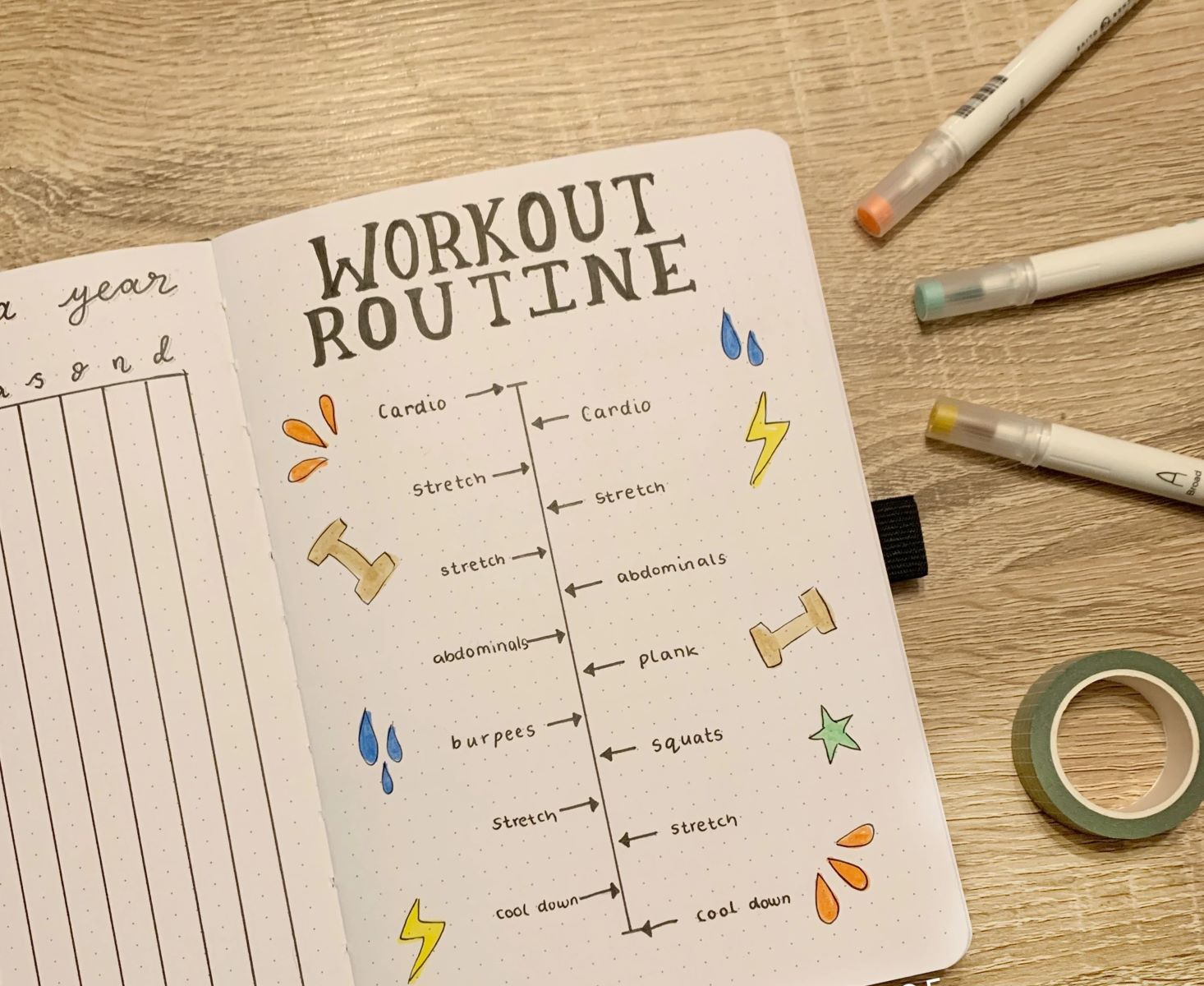Home>Misc>Featured>Why Do I Feel Like Throwing Up After A Workout


Featured
Why Do I Feel Like Throwing Up After A Workout
Modified: August 19, 2023
Discover why you may experience nausea after exercising and learn how to prevent it in this featured article.
Introduction
Have you ever experienced the sensation of feeling nauseous after a workout? It can be quite unsettling and may leave you wondering why this happens. While physical exercise is generally believed to promote feelings of well-being and increased energy, feeling like throwing up after a workout can be perplexing.
The human body is a complex system with various interconnected processes. When we engage in physical activity, our bodies undergo changes in heart rate, blood flow, and metabolism to meet the increased demand for energy.
In this article, we will explore the potential causes of feeling nauseous after a workout. We will delve into the effects of dehydration, intense exercise, blood flow redistribution, and overexertion on the digestive system. Additionally, we will discuss other factors that may contribute to exercise-induced nausea and provide helpful tips to prevent it.
Understanding the reasons behind this unpleasant post-workout sensation can help you make the necessary adjustments to your exercise routine and alleviate any distress or discomfort you may experience.
Causes of feeling nauseous after a workout
Feeling nauseous after a workout can have several underlying causes. Let’s explore some of the main factors that can contribute to this sensation:
- Dehydration: One common cause of feeling nauseous after exercise is dehydration. When you sweat during a workout, your body loses water and electrolytes, which are essential for maintaining proper physiological function. Dehydration can lead to feelings of dizziness, nausea, and even vomiting.
- Intense exercise: Engaging in high-intensity workouts, such as interval training or heavy weightlifting, can put significant stress on your body. This intensity can lead to a disruption in your digestive system and trigger feelings of nausea. The increased demands on your cardiovascular system and muscles can divert blood flow away from your digestive organs, influencing their function.
- Blood flow redistribution: During exercise, your body shifts blood flow from the gastrointestinal system to other areas of the body that require increased oxygen and nutrients, such as the muscles and lungs. This reduced blood supply to the digestive organs can impair their function and result in feelings of nausea and discomfort.
- Overexertion: Pushing yourself beyond your limits during a workout is another potential cause of exercise-induced nausea. When you exercise too intensely or for an extended period, your body may struggle to keep up with the energy demands. This can result in decreased blood flow to the digestive system and an accumulation of waste products, leading to feelings of nausea.
It is essential to note that these causes are not mutually exclusive, and individuals may experience a combination of these factors. Now that we have explored some of the main causes, let’s delve deeper into each one to gain a better understanding of how they may contribute to feeling nauseous after a workout.
Dehydration as a trigger
Dehydration is a common culprit when it comes to feeling nauseous after a workout. As you exercise, your body sweats to regulate its temperature, resulting in the loss of fluids and electrolytes.
When you become dehydrated, your blood volume decreases, which can lead to a decrease in blood flow to various organs, including the stomach and intestines. This reduced blood flow can result in digestive discomfort and feelings of nausea.
In addition to the decrease in blood flow, dehydration can also disrupt the balance of electrolytes in your body. Electrolytes, such as sodium, potassium, and chloride, play a crucial role in maintaining proper cell function and fluid balance.
When these electrolyte levels become imbalanced, it can affect the function of the digestive system and contribute to feelings of nausea. Low levels of electrolytes can disrupt the contraction and relaxation of the muscles in the gastrointestinal tract, leading to gastrointestinal distress.
To prevent dehydration and its associated symptoms, it is vital to stay adequately hydrated during and after exercise. The American College of Sports Medicine recommends drinking fluids before, during, and after exercise to replace the fluids lost through sweat.
A good rule of thumb is to drink 16-20 ounces of water or fluid two to three hours before a workout and 8-10 ounces 10-20 minutes before starting. During exercise, try to consume around 7-10 ounces of fluid every 10-20 minutes.
After your workout, continue to hydrate by drinking fluids, preferably water or a sports drink that contains electrolytes. This will help replenish the lost fluids and electrolytes and keep you properly hydrated.
By maintaining proper hydration levels, you can reduce the risk of dehydration-related nausea and ensure optimal digestive function during and after your workouts.
Intense exercise and its impact on digestion
Engaging in intense exercise can have a significant impact on the digestive system, potentially leading to feelings of nausea or gastrointestinal discomfort.
During high-intensity workouts, such as interval training or heavy weightlifting, your body undergoes various physiological changes. One of these changes is the redirection of blood flow away from your digestive organs and towards your muscles and lungs, which require increased oxygen and nutrients.
This blood flow redistribution can impair the normal functioning of the digestive system. With reduced blood supply, the digestive organs may not receive enough oxygen and nutrients, compromising their ability to break down food properly.
In addition, intense exercise can also increase the release of stress hormones, such as cortisol, which can further disrupt digestion. Elevated levels of cortisol can inhibit the digestive process and contribute to feelings of nausea or discomfort.
Furthermore, intense exercise can stimulate the sympathetic nervous system, also known as the “fight or flight” response. This response can decrease the activity of the parasympathetic nervous system, which is responsible for promoting digestion and absorption of nutrients.
The combination of reduced blood flow, increased stress hormone release, and altered nervous system activity can disrupt the normal functioning of the digestive system and lead to gastrointestinal symptoms, including nausea.
To minimize the impact of intense exercise on digestion and reduce the likelihood of feeling nauseous, consider adjusting your workout intensity and duration gradually. Gradual progression allows your body to adapt to the increased demands and reduces the likelihood of overwhelming your digestive system.
Additionally, listen to your body and pay attention to any signals of discomfort. If you start to feel nauseous during a workout, it may be an indication that you have pushed yourself too hard. Take a break, hydrate, and allow your body to recover before continuing.
Remember, it’s essential to push your limits and challenge yourself during exercise, but it’s equally important to do so in a way that allows your body to adapt and maintain optimal digestive function.
Blood flow redistribution and its effects on digestion
During exercise, your body undergoes a process of blood flow redistribution, which can have significant effects on digestion and potentially lead to feelings of nausea.
When you engage in physical activity, your body increases blood flow to the muscles and lungs to meet the increased oxygen and nutrient demands. To redirect blood to these areas, blood flow to the digestive organs, including the stomach and intestines, is reduced.
This reduction in blood flow to the digestive system can impair its function and lead to digestive discomfort or nausea. The decreased blood supply means that the organs responsible for breaking down and absorbing nutrients may not receive an adequate oxygen and nutrient supply.
As a result, digestion may slow down, and the normal coordination of muscle contractions in the gastrointestinal tract may be disrupted. This can contribute to feelings of bloating, indigestion, and even nausea.
In addition to reduced blood flow, the redistribution of blood during exercise can also affect the release of certain hormones and enzymes involved in digestion.
For example, the release of digestive enzymes from the pancreas may be decreased, further compromising the breakdown and absorption of nutrients. The hormones that regulate hunger and satiety, such as ghrelin and leptin, may also be affected, potentially leading to changes in appetite and gastrointestinal discomfort.
It’s important to note that the extent of blood flow redistribution can vary depending on the type and intensity of exercise. Higher-intensity exercises and activities that involve large muscle groups, such as running or cycling, may have a more pronounced effect on blood flow redistribution and its impact on digestion.
To minimize the effects of blood flow redistribution on digestion and reduce the likelihood of feeling nauseous, it can be helpful to incorporate periods of rest and recovery during your workouts. These breaks allow blood flow to return to the digestive system and help it resume its normal functioning.
Additionally, after completing a strenuous workout, give your body time to recover and allow blood flow to gradually return to normal by engaging in light movement and stretching.
By being aware of the effects of blood flow redistribution and implementing strategies to mitigate its impact, you can support optimal digestive function during and after exercise, minimizing the risk of experiencing exercise-induced nausea.
Overexertion and its impact on the digestive system
Pushing yourself beyond your limits during a workout can have a significant impact on your digestive system and potentially lead to feelings of nausea or gastrointestinal discomfort.
When you engage in intense and prolonged exercise, your body may struggle to meet the increased energy demands. This can result in a decrease in blood flow to the digestive organs as your body redirects blood to the muscles and lungs.
The reduced blood flow to the digestive system can impair its function, leading to slowed digestion and decreased nutrient absorption. This disruption can cause discomfort and may manifest as feelings of nausea.
Additionally, overexertion can also result in the accumulation of waste products, such as lactic acid, in the muscles. These waste products can increase acidity levels in the body and contribute to gastrointestinal distress, including feelings of queasiness or indigestion.
Furthermore, overexertion can cause an elevation in stress hormones, such as cortisol, in the body. Elevated cortisol levels can negatively impact the digestive system by inhibiting the secretion of digestive enzymes and altering the motility of the gastrointestinal tract.
When the digestive process is disrupted, the breakdown and absorption of nutrients may be compromised, leading to uncomfortable digestive symptoms.
To prevent overexertion and minimize its impact on the digestive system, it’s important to practice proper exercise technique and listen to your body’s signals of fatigue or discomfort. Pushing yourself too hard and too fast can increase the risk of overexertion and the associated gastrointestinal symptoms.
Gradual progression in intensity and duration of exercise allows your body to adapt and reduces the likelihood of overwhelming your digestive system. It’s also crucial to incorporate rest periods into your workout routine to give your body time to recover, allowing the digestive system to resume normal function.
By being mindful of your limits, pacing yourself, and respecting your body’s need for rest and recovery, you can minimize the impact of overexertion on your digestive system and decrease the likelihood of experiencing exercise-induced nausea.
Other potential reasons for feeling nauseous after a workout
While dehydration, intense exercise, blood flow redistribution, and overexertion are common causes of feeling nauseous after a workout, there are other factors to consider as well. Let’s explore some additional potential reasons:
- Postural changes: Rapid changes in body position, such as lying down or bending over immediately after a workout, can sometimes trigger nausea. These postural changes can affect blood circulation and may disrupt the digestive process.
- Poor pre-workout nutrition: Eating a heavy or large meal too close to your workout can cause digestive discomfort and increase the likelihood of feeling nauseous. It’s important to allow enough time for proper digestion before engaging in exercise.
- Food intolerances or sensitivities: Some individuals may experience specific food intolerances or sensitivities that can cause gastrointestinal symptoms, including nausea. Pay attention to any patterns in the types of foods that trigger these symptoms post-workout.
- Pre-existing gastrointestinal conditions: Individuals with pre-existing gastrointestinal conditions, such as acid reflux, irritable bowel syndrome (IBS), or gastroparesis, may be more prone to experiencing exercise-induced nausea. These conditions can be exacerbated by the physiological changes that occur during exercise.
- Anxiety or stress: Feelings of anxiety or stress before or during exercise can impact the digestive system and potentially lead to nausea. The mind-body connection plays a significant role in how our bodies respond to physical exertion.
It’s important to be aware of these additional factors and consider whether they may be contributing to your post-workout nausea. Understanding the underlying reasons can help you make appropriate adjustments to your exercise routine and minimize discomfort.
If you consistently experience severe nausea or other gastrointestinal symptoms after every workout, it is recommended to consult with a medical professional for further evaluation and guidance.
Tips to prevent feeling nauseous after a workout
Experiencing nausea after a workout can be unpleasant and detract from your overall exercise experience. Fortunately, there are several strategies you can employ to help prevent this sensation. Consider the following tips:
- Hydration: Ensure you are adequately hydrated before, during, and after your workout. Drink water or sports drinks containing electrolytes to replenish lost fluids and maintain proper hydration levels.
- Proper meal timing: Avoid eating a heavy or large meal too close to your workout. Allow at least 1-2 hours for digestion before engaging in exercise. Opt for lighter, easily digestible snacks if necessary.
- Gradual progression: Gradually increase the intensity and duration of your workouts to allow your body to adapt. Avoid pushing yourself to the point of overexertion, which can contribute to feelings of nausea.
- Exercise timing: Consider the timing of your workout in relation to meals. Exercising on an empty stomach or waiting 2-3 hours after a meal can help minimize the risk of digestive discomfort.
- Proper warm-up and cool-down: Incorporate a thorough warm-up and cool-down routine into your workouts. This helps prepare your body for exercise and aids in returning blood flow to the digestive system gradually.
- Breathing techniques: Practice deep breathing exercises during and after your workout. Deep diaphragmatic breathing can help relax the body, reduce stress, and support proper digestion.
- Manage stress and anxiety: Engage in stress-reducing activities such as yoga, meditation, or mindful practices. Managing stress and anxiety levels can help prevent nausea and create a more enjoyable workout experience.
- Monitor food sensitivities: Pay attention to any specific foods or ingredients that may trigger digestive discomfort or nausea. If you notice patterns, consider eliminating or avoiding those items before exercising.
Remember, it’s essential to listen to your body and make adjustments as needed. If you consistently experience severe or persistent nausea after your workouts, consult with a healthcare professional to rule out underlying medical conditions and receive personalized guidance.
Hydration guidelines during and after exercise
Proper hydration is crucial both during and after exercise to prevent dehydration and minimize the risk of feeling nauseous. Here are some guidelines to help you maintain optimal hydration levels:
- Pre-workout hydration: Start your workout well-hydrated by drinking fluids in the hours leading up to your exercise session. Aim to consume 16-20 ounces of water or fluid two to three hours before your workout.
- During your workout: Drink fluids at regular intervals during your exercise session to replace the fluids lost through sweat. The American College of Sports Medicine recommends consuming 7-10 ounces of fluid every 10-20 minutes during exercise.
- Choose the right fluid: Water is generally sufficient for most workouts lasting less than an hour. For intense or prolonged exercise, consider sports drinks that contain electrolytes to replenish lost fluids and restore electrolyte balance.
- Listen to your body: Pay attention to thirst cues and listen to your body’s signals. If you feel thirsty during your workout, it’s a sign that you need to rehydrate.
- Post-workout hydration: After your workout, continue to replenish fluids to restore hydration levels. Aim to drink 20-24 ounces of fluid for every pound lost during exercise.
- Monitor urine color: Check the color of your urine as a quick hydration indicator. You should aim for a pale yellow color, which indicates good hydration. Dark-colored urine may be a sign that you need to drink more fluids.
- Consider electrolyte replacement: If you engage in intense or prolonged exercise, particularly in hot and humid conditions, you may need to replenish electrolytes. Sports drinks or electrolyte tablets can help restore electrolyte balance.
- Individualize your hydration strategy: Factors such as body size, intensity of exercise, and environmental conditions can influence fluid needs. Experiment with different fluid amounts and types to find what works best for you.
Remember that maintaining proper hydration is not only important for preventing dehydration and the associated symptoms, but it also supports optimal performance and overall well-being during and after your workouts.
By following these hydration guidelines and paying attention to your body’s needs, you can stay properly hydrated, reduce the risk of feeling nauseous, and optimize your exercise experience.
Adjusting exercise intensity and duration
Adjusting the intensity and duration of your workouts can play a significant role in preventing feelings of nausea and discomfort during and after exercise. Here are some tips on how to make appropriate adjustments:
- Listen to your body: Pay attention to how your body feels during exercise. If you start to feel nauseous or experience discomfort, it may be a sign to dial back the intensity.
- Gradual progression: Increase the intensity and duration of your workouts gradually over time. This allows your body to adapt to the increased demands and reduces the risk of overwhelming your digestive system.
- Intervals or high-intensity bursts: Instead of continuously performing high-intensity exercises, consider incorporating intervals of high-intensity bursts followed by periods of active recovery. This can help prevent excessive stress on your body and reduce the likelihood of feeling nauseous.
- Alternative exercises: If a specific exercise consistently triggers nausea, consider substituting it with a different exercise that targets the same muscle groups but is less strenuous on your body.
- Focus on form and technique: Proper form and technique during exercise are not only important for injury prevention but also for optimizing the effectiveness of your workouts. Maintaining good posture and engaging the correct muscles can help reduce unnecessary strain on your body.
- Take breaks: Incorporate rest periods into your workout routine. These breaks allow your body to recover, catch its breath, and help restore blood flow to the digestive system.
- Consider low-impact activities: If high-impact exercises consistently lead to nausea, try incorporating low-impact activities such as swimming or cycling. These activities place less stress on your body and can be gentler on your digestive system.
- Work with a professional: If you’re unsure about adjusting your exercise intensity or need guidance, consider working with a certified fitness professional or personal trainer. They can provide tailored advice and help you adjust your workout regimen to avoid exercise-induced nausea.
Remember, it’s important to challenge yourself during workouts, but it’s equally important to do so in a manner that allows your body to adapt and maintain proper digestive function. Adjusting exercise intensity and duration can help create a more comfortable and enjoyable workout experience.
Proper meal timing before a workout
Proper meal timing before a workout is essential to support optimal digestion, prevent discomfort, and minimize the risk of feeling nauseous. Here are some guidelines to consider:
- Allow time for digestion: Eat a meal or snack that is easily digestible at least 1-2 hours before your workout. This allows your body enough time to break down and absorb nutrients before you start exercising.
- Choose the right balance of macronutrients: Include a balance of carbohydrates, protein, and healthy fats in your pre-workout meal. Carbohydrates provide energy, protein supports muscle repair and recovery, and fats help provide sustained energy.
- Avoid heavy or high-fat meals: Foods that are high in fat or heavy in nature can take longer to digest and may cause gastrointestinal discomfort, especially during intense exercise. Opt for lighter, easily digestible meals or snacks instead.
- Focus on complex carbohydrates: Choose complex carbohydrates such as whole grains, fruits, and vegetables. They provide a steady release of energy and can help sustain your performance throughout your workout.
- Stay hydrated: Don’t forget to hydrate before your workout. Pair your pre-workout meal with fluid intake to ensure you are properly hydrated and support digestion.
- Individualize your approach: Experiment with meal timing and types of foods to find what works best for you. Pay attention to how different foods and timing choices affect your energy levels and overall comfort during exercise.
- Snacking before shorter workouts: If you have a shorter workout or prefer to exercise in a fasted state, a small, easily digestible snack like a piece of fruit or a handful of nuts can provide a quick source of energy.
- Post-meal workout considerations: If you choose to have a larger meal after your workout, aim to consume it within 1-2 hours to support proper recovery and replenish nutrient stores.
Remember that everyone’s digestive tolerance and preferences can vary, so it may take some trial and error to find the best pre-workout meal timing and choices that work for you. Be attentive to your body’s cues and adjust accordingly to optimize digestion and minimize the risk of feeling nauseous during your workouts.
Post-workout recovery techniques
Effective post-workout recovery is crucial for optimizing performance, reducing muscle soreness, and minimizing the risk of feeling nauseous. Here are some helpful techniques to incorporate into your post-workout routine:
- Cool down: After completing your workout, take a few minutes to engage in a cool-down routine. This can include light cardio exercises, stretching, or yoga poses. Cooling down helps gradually decrease your heart rate and allows your body to transition out of the active state more smoothly.
- Hydrate: Replenish fluids lost during your workout by drinking water or electrolyte-rich fluids. Proper hydration supports recovery and helps maintain balanced body functions.
- Refuel with balanced nutrition: Consume a balanced post-workout meal or snack within 1-2 hours after exercising. Include a combination of carbohydrates to restore energy stores, protein for muscle repair, and healthy fats for sustained energy.
- Include protein: Protein plays a vital role in muscle repair and recovery. Incorporate a good source of protein, such as lean meats, poultry, fish, eggs, legumes, or dairy products, into your post-workout meal or snack.
- Consume antioxidant-rich foods: Including antioxidant-rich foods in your post-workout meal can help combat oxidative stress and inflammation. Berries, leafy greens, colorful fruits, and vegetables are great options.
- Stretching: Engage in stretching exercises after your workout to improve flexibility and prevent muscle tightness or imbalances. Focus on the major muscle groups you targeted during your workout.
- Rest and recovery: Allow your body sufficient time to rest and recover after intense workouts. Incorporate rest days into your training schedule to prevent overexertion and optimize performance in subsequent workouts.
- Get adequate sleep: Sleep is essential for muscle recovery and overall well-being. Aim for 7-9 hours of quality sleep each night to support optimal recovery and overall health.
- Listen to your body: Pay attention to how your body feels after each workout. If you experience excessive fatigue, dizziness, or persistent feelings of nausea, it may be a sign that you need more rest or should adjust your exercise routine.
Following these post-workout recovery techniques not only helps reduce muscle soreness and fatigue but also supports your digestive system in returning to its normal state and minimizes the likelihood of feeling nauseous after a workout.
Remember, recovery is an essential part of the exercise process, and taking care of your body post-workout is just as important as the workout itself.
Seeking medical advice for persistent symptoms
If you consistently experience persistent symptoms such as recurring nausea, vomiting, or gastrointestinal discomfort after your workouts, it is important to seek medical advice for a proper evaluation and guidance.
While exercise-induced nausea is relatively common and often related to factors like hydration, meal timing, or exercise intensity, persistent or severe symptoms may indicate an underlying condition that requires attention.
A healthcare professional, such as a primary care physician or a sports medicine specialist, can help assess your symptoms, review your medical history, and conduct appropriate tests or examinations to determine the cause of your symptoms.
In some cases, exercise-induced nausea may be related to underlying gastrointestinal conditions, such as acid reflux, gastritis, or inflammatory bowel disease. These conditions may require specific treatments or modifications to your exercise routine to manage symptoms effectively.
Additionally, if you experience symptoms like severe abdominal pain, blood in vomit or stool, weight loss, or prolonged diarrhea, it is important to seek medical attention promptly, as these may indicate more serious underlying conditions that require immediate evaluation and treatment.
Remember, everyone’s body responds differently to exercise, and it’s essential to prioritize your health and well-being. Seeking medical advice allows you to address any concerns or potential underlying issues and receive personalized recommendations to ensure a safe and enjoyable workout experience.
If you ever have any doubt or concern about your symptoms, it is always best to consult with a healthcare professional who can provide accurate diagnosis and appropriate treatment options.
Conclusion
Feeling nauseous after a workout can be a distressing experience, but understanding the potential causes and implementing preventative measures can help minimize this discomfort. Dehydration, intense exercise, blood flow redistribution, and overexertion are common factors that may contribute to exercise-induced nausea. Additionally, other factors such as poor meal timing, postural changes, food intolerances, pre-existing gastrointestinal conditions, and stress can also play a role.
By prioritizing proper hydration, adjusting exercise intensity and duration, practicing proper meal timing, and incorporating effective post-workout recovery techniques, you can support optimal digestion, minimize the risk of feeling nauseous, and enhance your overall exercise experience.
However, it is important to remember that everyone’s body is unique, and what works for one person may not work for another. It’s crucial to listen to your body, pay attention to its signals, and make adjustments accordingly. If you consistently experience severe, persistent, or concerning symptoms, seeking medical advice is essential to identify any underlying conditions and receive proper guidance.
Remember, exercise is meant to be enjoyable and beneficial for both your physical and mental well-being. By understanding and addressing the potential causes of exercise-induced nausea, you can optimize your workouts, reduce discomfort, and continue on your path towards a healthy and active lifestyle.









